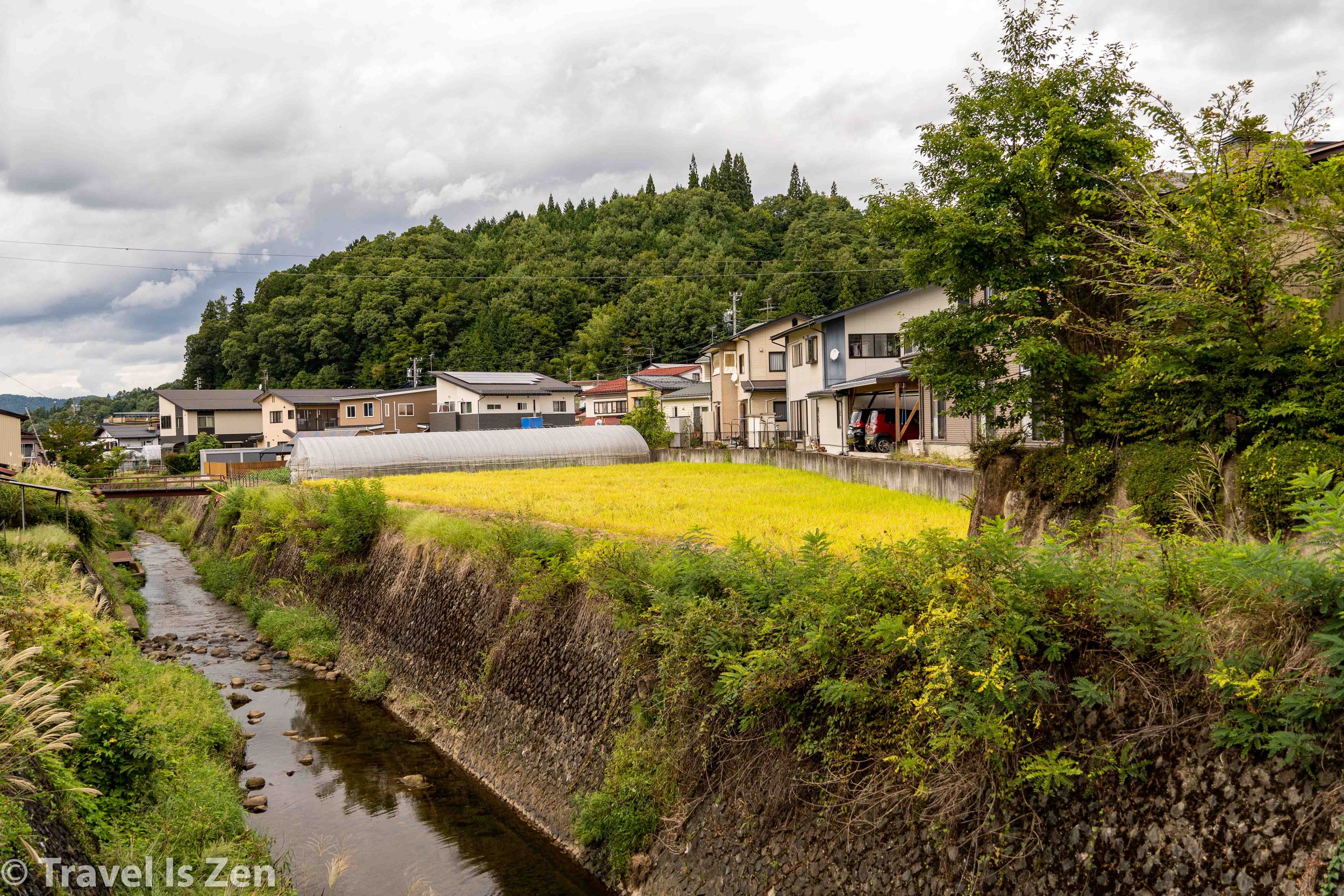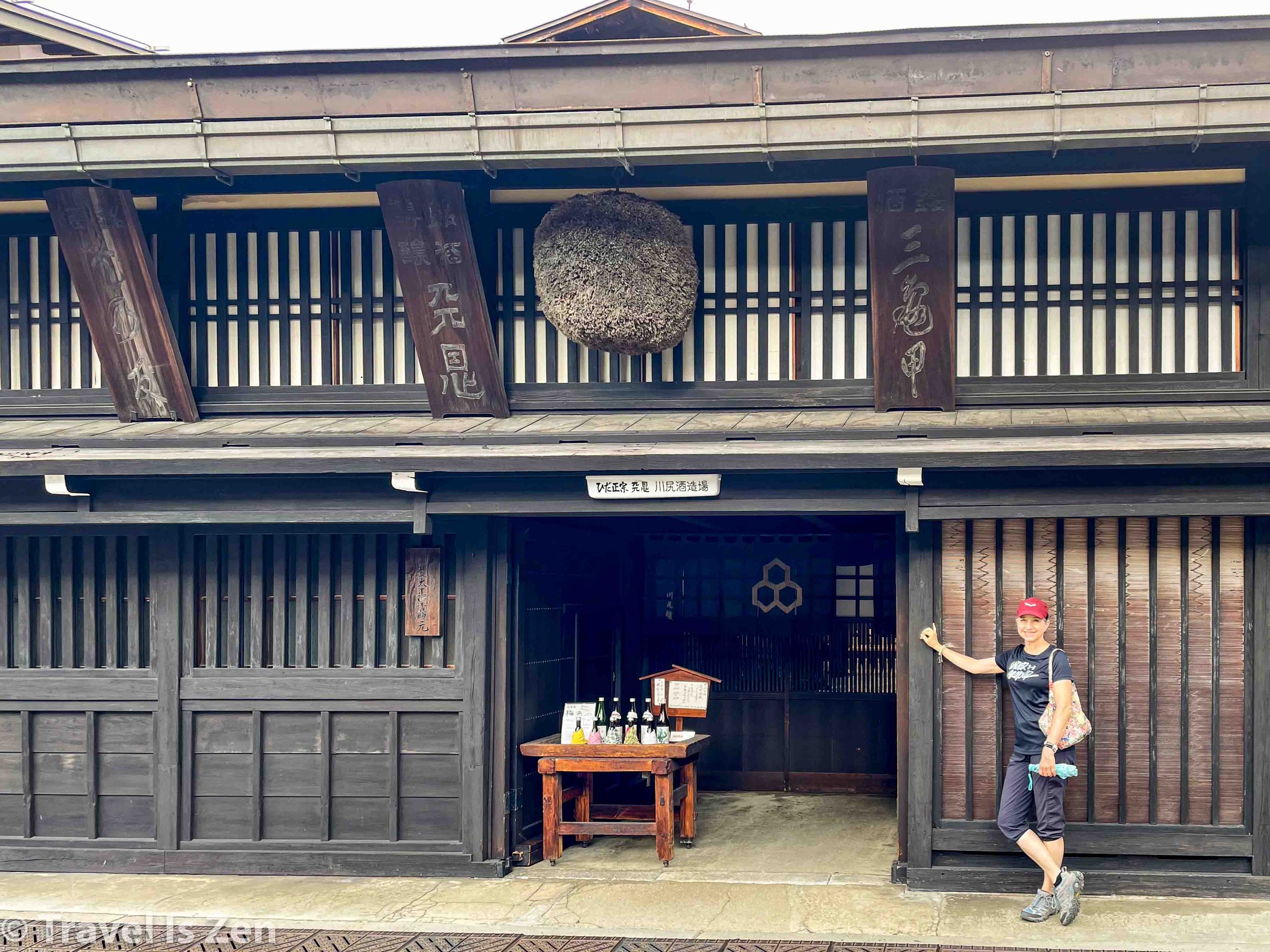Hida-Takayama: Living History and Rural Charm in Japan
When I ask fellow travelers if they have been to America, I am always disappointed when they tell me they’ve been to New York City and/or Los Angeles. I bite my tongue from responding, “Oh, so you didn’t really see America…”. I imagine Japanese people have a similar reaction when foreigners tell them they’ve only visited Tokyo and/or Osaka. Cities are fun in their own way, don’t get me wrong. But to truly get a sense of lifestyle, values, and cultural history, my opinion is that a traveler must leave the bright lights behind and spend a few days with real people in rural communities.
Hida-Takayama, Gifu Prefecture, Japan
Hida-Takayama is one of those rare destination gems that reward the intrepid traveler willing to take the road (somewhat) less traveled. Its commitment to cultural and historical preservation educates and inspires. Surrounded by mountains, it’s a gateway to the natural, untainted beauty of Japan. It’s walkable, friendly, and leaves an outsized impression. We spent four nights based in Hida-Takayama before venturing deeper into the mountains of Chūbu-Sangaku National Park for a five day hut-to-hut trek in the Japan Northern Alps.
Click any photo for a larger slideshow.
In four days, we packed in all the experiences we could handle from our base in Takayama - including a day trip to the Gassho Houses in Shirakawa and Gokayama - but my recommendation is to slow down here. Back it off and soak it in!
Old Town Exploration: Woodworking and Sake Tasting
Takayama, Gifu, Japan
Artisan Woodworking
The main sites in Takayama are clustered in Old Town, also known as Sanmachi Suji. The city of Takayama dates back to the late 1500’s. It was established as a feudal merchant town by Kanamori Nagachika, a local ruling Samurai. The lucrative resources were — and still are today — high-quality lumber and master carpenters able to shape wood into art. This woodworking legacy is evident throughout Old Town, where beautifully preserved merchant homes dating back to the Edo Period (1603-1868) showcase distinctive latticed windows. As they have for centuries, the buildings host a variety of shops, sake breweries, and eateries, many of which are still owned by the descendants of the original merchants.
Strolling through Takayama, we encountered wood-carved street sculptures and whimsical decor. We wandered into a furniture store showcasing high quality, functional works of art. Each hand-crafted piece is built to last, with attention to detail, purposefully and beautifully designed.
Sake Tasting
Sake brewing is another age-old business in Takayama and each brewery offers some type of tasting experience. After comparing a few options, we chose Hirase Sake Brewery and Tasting Room. For a mere USD $3.50 (500 yen), we were allowed 30 minutes to taste from a selection of more than 25 different types of sake. In between “shots”, we perused the informative displays and brochures explaining the various types and qualities of sake. An English-speaking host offered a few of her recommendations, as well. We left with a souvenir tasting glass and quite the buzz!!
Click any photo for a slideshow.
There are many other breweries and shops, with tasting experiences ranging from fully-automated coin-driven machine-dispensers (think “Fro-Yo” for sake) to high-end top-shelf indulgences complete with food pairings. Just follow the cedar balls (sugidama) hanging at shop entrances to brewery-hop.
Higashiyama Walk
Takayama is very walkable. It’s the type of city where one can head out the door and explore for hours, soaking in the daily rhythm and routine. We followed a course called the Higashiyama Walk, which takes amblers up to the old castle ruins at the top of the hill overlooking the town and then meanders through numerous temples and shrines. We followed a mostly-wooded trail, with bear bells, impossibly tall cedar trees, spring water, and cemeteries.
Temple along Higashiyama Trail
Click any photo for a slideshow…
The trail showcases a calmer, less-touristy side of Takayama - and was, for me, the highlight of our stay in Takayama. Winding through narrow streets, past neighborhood gardens and over dainty bridges, we got a real sense for daily life in this small town.
Takayama Morning Markets
Rise and shine early in Takayama. There are two traditional morning markets still going strong after several hundred years — Miyagawa Market and the Jinyamae Market. As the sun rose, we walked across the Kaji Bashi Bridge to the Miyagawa Market. Pop-up stalls along the river side sell various fruits, vegetables, pickles, and local hand-made crafts and foods. Across the aisle, a mixed bag of store fronts sell coffee to go, souvenirs, desserts, and more. As we entered one of the fixed retail shops, we discovered that the inside is a labyrinth of little individual mini-markets selling everything from tea and t-shirts to hand-carved chopsticks and toothbrush handles. The market had a nice mix of both Japanese and international tourists sampling and exploring Takayama’s regional treats. It’s also a great place for people-watching, too.
One of the trendy shops in Miyagawa Market is a place selling rice balls stuffed with all sorts of goodies. If you don’t pre-order the day before, you will be waiting in a long line before the shop even opens. Fortunately, we got an insider tip and skipped to the front of the line as the shutters opened in the morning.
Yatai Kaikan (Festival Floats Exhibition Hall)
The Takayama Matsuri, held annually each spring and fall, ranks among Japan's most beautiful and elaborate festivals. Tourists pour into Takayama to witness the elaborate float (yatai) parade, traditional music, and lively performances. The float processions are not just for show, but are actually rooted in a Shinto tradition of transporting sacred deities through the town to bless residents and visitors. The festivals are a community affair, with locals actively participating in the preparations, float maintenance and operation, and performances. They serve as an important means of preserving and passing down traditions from generation to generation.
The yatai floats are elaborate structures, some dating back to the 17th century. They are adorned with detailed carvings, metalwork, lacquer, and intricate fabrics. Some of the floats feature mechanical doll (karakuri ningyo) performances that have been delighting parade watchers for hundreds of years. We got a chance to view the artistry up close and learn about the various designs and purpose of each float at the Yatai Kaikan Exhibition Hall. At the ticket booth, we were handed an audio set. Then we simply followed the ramp around the exhibit area, using prominent bar codes to activate the audio descriptions offered in a variety of languages, including English. Really well done exhibit! Definitely worth going to gain an appreciation for this cultural legacy.
Takayama Jinya
During the Edo period, Takayama was put under the direct administration of the Tokugawa Shogunate in 1692, due to the richness of its lumber and renowned carpenters. The Takayama Jinya functioned as the local government headquarters, managed by officials sent from Edo (Tokyo). Visiting a “government administration building” did not sound too appealing to me, but it was actually quite educational! We learned how tax collection in the form of rice and other goods took place, how important guests were entertained, and even glimpsed an “interrogation” area where prisoners were subjected to various forms of torture.
Takayama Jinya, Edo period government administration building
The gardens surrounding the building — and the tatami rooms, as well — were beautiful and well-preserved. Takayama Jinya offers professional guided tours in several languages, but we just relied on the detailed exhibit signs for explanation and felt we learned enough.
garden courtyard at Takayama Jinya
Ryokan: Spa-Oriented Bed and Breakfast Inns
Central Japan is known for its hot springs. The majority of ryokans (inns with natural hot spring spas), brand name hotels, and restaurants in Takayama are in the old town section of the city. Ranging from 2 to 5 stars, you can get as fancy as you like (or not). We stayed in a small 3-star ryokan literally on the opposite side of the train tracks and saved a few dollars. It was super quiet at night and just a 15 minute walk to Old Town. The elder couple who owned the ryokan were patient with our extremely limited Japanese and super sweet as they answered our questions, recommended restaurants and sites, and inquired about our daily excursions. In their entrance, they had quite a display of locally-crafted traditional footwear, including a pair of bear feet boots (personally shot by the ryokan owner, as he proudly told us)!
We ordered breakfast each morning and the meals were incredible! Each breakfast was something unique and local, cooked on premise by the wife, served with an explanation of the various dishes.
The hot spring was inside. It was a basic spa pool with a shower area to wash off before getting into the hot spring water. We didn’t mind a minimalist onsen because we visited Takayama at the end of summer - it was hot and very humid!! — so we really only needed to wash off the day’s sweat. The hot spring pool was an added bonus to rejuvenate our tired legs and feet.
This summary post captured the main activities we did in our short stay in Takayama, but we did so much more, from visiting the various town museums to trying out the local delicacies. If you are planning a trip to Takayama, stay as long as your time allows. It really is worth it, for the culture, festivals, history, food, and relaxing vibe. And definitely don’t miss touring the Gassho Houses in Shirakawa and Gokayama!











































































